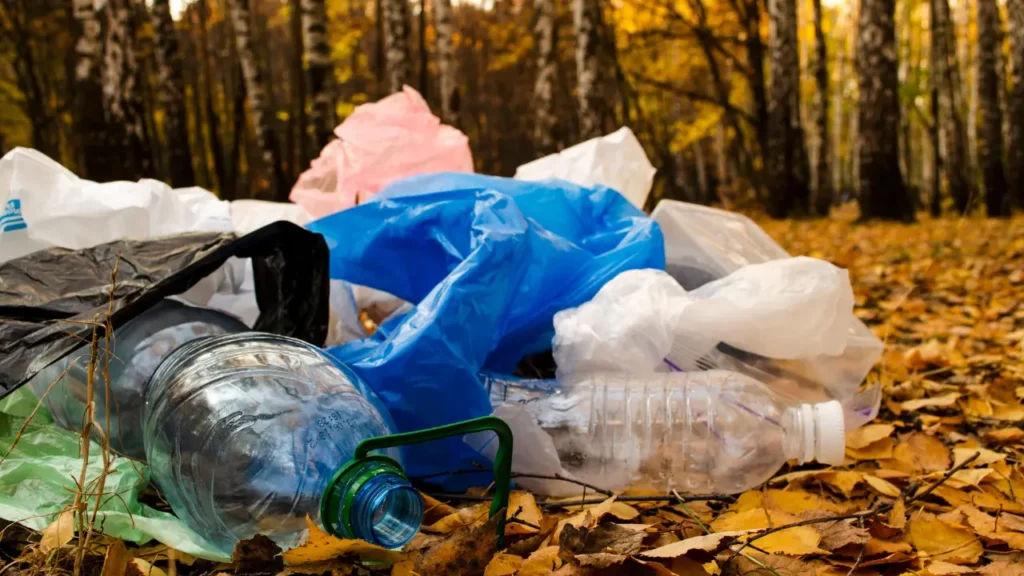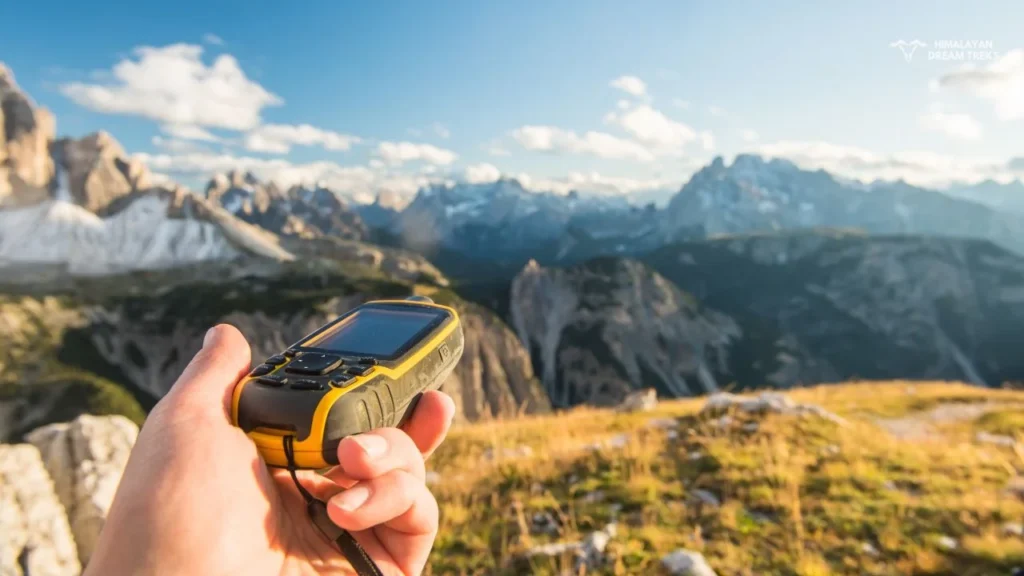Leave No Trace is a 7 principles philosophy to help us become a better trekker.
Though these principles are more focused on outdoor activities like trekking, hiking, camping, cycling, etc., we can apply these to all forms of travel.
Trekking has become more famous than ever before, causing an influx in the number of trekkers and boosting the economy. Who doesn’t want a peaceful night under the starry night in the laps of mountains?

The problem begins when we neglect our responsibilities as a trekker and focus only on enjoyment. As a responsible trekker, we must adhere to these principles and save these precious mountains, ecosystems, flora, and fauna.
Let’s discuss 7 Leave No Trace principles in the context of India.
Plan Ahead and Prepare
Know the special concerns and regulations of the region you are going to visit.
Why?
Having a clear idea of the place you are going to visit helps you plan accordingly. Imagine accidentally breaking the law and paying a fine doesn’t sound nice, right?
As a responsible trekker, your goal should be to minimize the harm to the ecology while trekking.
How?
- Search for official rules and regulations by the government, like inner line permits in Nelong Valley, medical certificates for elderlies, forest entry fees, etc.
- Acknowledge and respect the local culture and traditions.
- Activities like smoking, drinking alcohol, spitting tobacco, etc, are mostly banned in historical and culturally significant places.
- Avoid honking horns are prohibited in hilly areas like Sikkim.
Prepare for extreme weather hazards and emergencies
Why?
Mountain areas are especially prone to sudden weather changes. Being stuck in a snowstorm or wild rain on a mountain is not a great idea. Any mishap can happen, and it takes time for help to reach you or vice-versa, especially if you are solo or without any agency.
How?
- Always check the weather forecast beforehand and choose the season wisely.
- Bring a medical kit with you.
- Keep a physical waterproof map so you won’t get lost without proper guidance.
- Train yourself both mentally and physically.
- Carry appropriate clothes like a raincoat for monsoon and woolens/thermals for winter.

Schedule your trip to avoid times of high use
Why?
It is observed that a high number of people plan their treks on weekends or holidays, resulting in an over-crowded Himalayas. This disrupts the peace for animals and birds and harms the ecology of the forest.
How?
- Avoid holidays and weekends; instead, try for weekdays.
- Plan for less crowded, not famous treks to distribute the stress on mountains. This will also give you a chance to explore and trek peacefully without any crowd.
- Visit in smaller groups and avoid trekking in larger groups to reduce the footprint on mountains.
Repackage food to minimize waste.
Why?
Most food items are packed in multi-layer packing, which is not recyclable. Hence, these wrappers remain as it is in the mountains. Cattle might eat and choke on them, and small bits of plastic get stuck in birds’ and other small animals’ bodies, causing life threats to them.

How?
- Carry your food in steel tiffin boxes and water in a proper water bottle.
- We know Maggie tastes different in the mountains, but they are highly polluting our Himalayas. Try local cuisines like Rajma Chawal to truly experience the local tastes and traditions.
- Avoid 1 use disposable items; instead, carry your utensils.
Use maps and compasses to remember the path instead of paints, flags, and stone cairns.
The paint used on trees is made up of harmful chemicals and releases the same in the environment. Disturbing natural rock formations for making cairns can increase the soil erosion process. And lastly, don’t cut trees because they are alive.

Travel and camp on durable surfaces
Why?
Terrains like meadows, marshes, and delicate flower valleys take years to grow. Our one decision of the wrong trial, an experiment in the name of fun, can ruin them. A designated trail helps other areas to flourish, and flora and fauna thrive.
How?
- Walk on durable surfaces like gravel, stone, and snow to minimize the harm.
- Walk in single trails even when it’s muddy to avoid creating another path.
- In areas of no trails, spread out to avoid making a new trail.
- Camp only in a designated area; if it is not there, look for a grassy, flat, snow-covered, or grave surface to camp.
- Make small campsites to avoid disturbing larger areas. Find a place with low vegetation.
- Stay away from water bodies for at least 200 ft. Animals, too, need to drink the water, and your presence might stop them from approaching. Or they might get closer to you.

Dispose of waste properly
Why?
It is understandable that being outdoors, you will need many things to function properly, but not taking care of them is not an option. Animals roam around forests for food and water, and your waste may choke them. This waste can turn poisonous and harmful to the ecology.
Don’t leave your trash, including vegetable peels, eggshells, and bones, behind. It takes time to decompose and starts to smell foul with time. These food items also attract animals near the campsite, so be cautious.
And lastly, all the human waste, plastic and other stuff is like a dent in the natural beauty.
How?
- Pack all the trash in eco-friendly bags. Properly dispose of the garbage; do not burn it, which can result in more pollution.
- Follow the proper way to handle human waste in catholes away from water, camps, and trails. Dug a deep 6-8 inches hole, and after the activity, cover it with tweaks, grass, and soil. Bury your toilet paper along with it.
- Do not wash your utensils directly in water bodies; carry the water away and then use it. Use less bio-degradable soap so that you won’t need much water.
- Ladies, don’t bury your sanitary pads or tampons in catholes. They are made of chemicals and other things which makes it impossible to decompose. The only way is to pack them out nicely and take them back with you. Again, it may attract animals as well. Suggestion – Use a menstrual cup.
- Menstrual cup using ladies follow the same procedure of human waste management.
Leave what you find
When you discover something unique, you feel joy; let others feel the same by leaving it there only. Taking what you find pretty disrupts ecology and ruins the beautiful picture of nature.
How?
- Don’t pluck beautiful flowers or plants or pick stones, as they are a part of beautiful vegetation. Example – Many want to pluck the “Karvi” flower of the Sahayadri range, which only blooms once in 12 years.
- Preserve the past – Observe the beauty of historical ruins and feel them instead of harming them.
- Avoid introducing non-native species as it will hurt them only. Imagine how a Camel will survive in the Himalayas.
- Don’t build structures like camps by clearing forest areas. Find a spot don’t make one.
- As mentioned before don’t use paints or make graffiti on rocks and trees.
Minimize campfire impacts

Why?
Fire becomes the main surviving element in brutal situations, but it also harms the environment. Many don’t extinguish campfires properly, which leads to big forest fires and damaging a large chunk of forest.
How?
- Use lightweight stoves for cooking instead of big fires.
- Make a small fire by using only a small piece of wood so that you can utilize it and put it off easily.
- Burn all the wood and coal, then spread the burnt waste around, not near trails or waterside.
Respect Wildlife

Why?
You are entering their home, so it’s natural to respect them too. An increasing number of trekkers already hamper their peace, so try to avoid them and let them live.
How?
- If you encounter any wild animal, observe them from afar; don’t go close. Never follow them.
- Don’t share your food with others. Their body is not used to it, which can result in health issues for them.
- If you are taking pets with you on the trek, control them; otherwise, it can lead to trouble.
- Research well and avoid sensitive times like nesting, mating, winter, or raising young ones. Animals can turn feral at this time and may attack you as well.
Be considerate of others
Why?
Others also want to enjoy and experience the same outdoors as you. Let others also see the beauty and find peace.
How?
- Don’t play loud music on Bluetooth speakers. It not only disturbs people but also animals and birds.
- After having your designated time to enjoy give others the chance to enjoy any viewpoint or an amazing sight.
- Take the breaks away from trails so that you don’t block the way for others.
- Avoid mules or porters unless it’s mandatory or an emergency. Don’t push your backpacks on others. This has a double impact on vegetation. Avoid trekking if you don’t want to carry your bag.

Summing up
Follow these Leave No Trace principles to enjoy your travel with low impact. By planning ahead, you can choose the place that aligns with your desires and capability and saves you time and resources. Being nice and considerate is a good quality to show both humans and wildlife. Leave the pristine Himalayas and other natural vegetation for our future generations so that they can also experience what we realize.



Leave a Comment